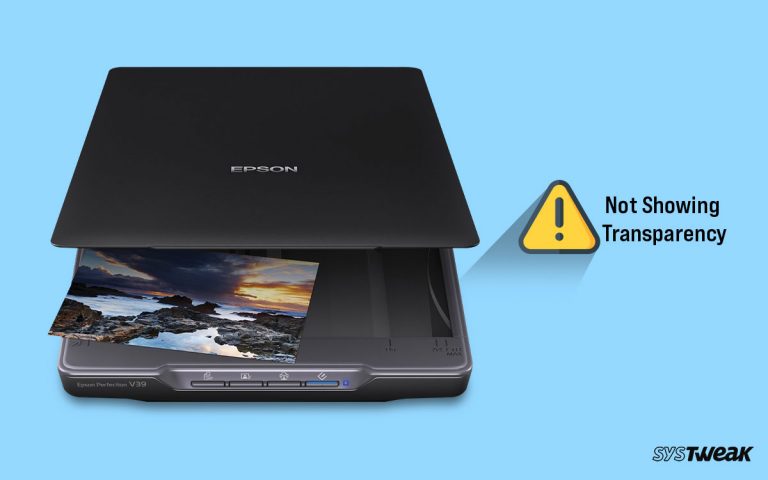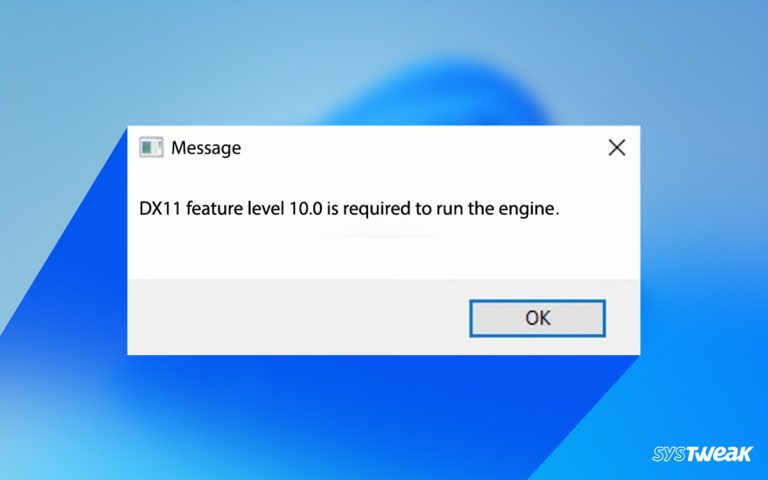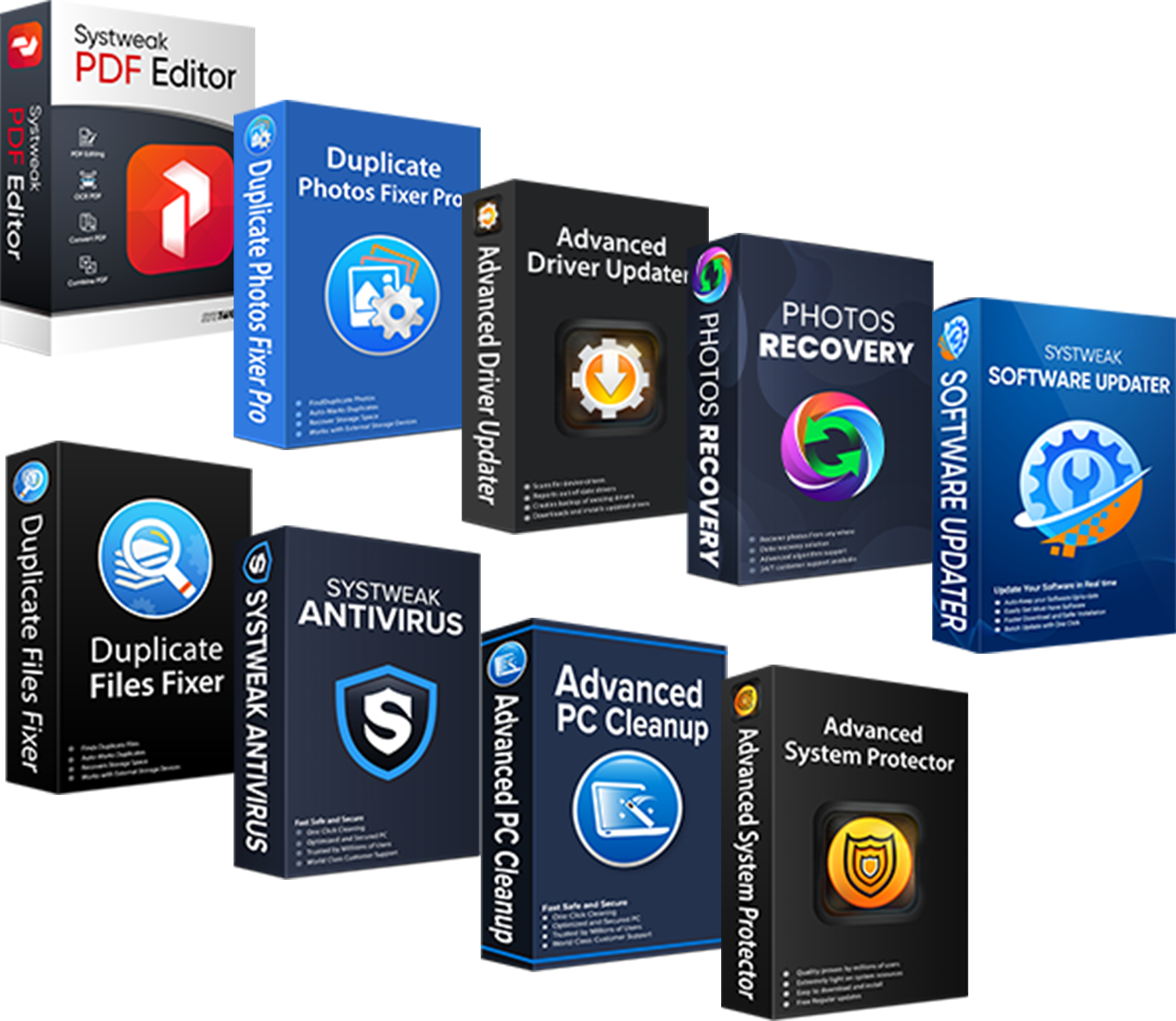Troubleshooting NVIDIA driver black screen issues is one of the most concerning yet frustrating problems for Windows users. Out of many issues related to NVIDIA drivers, the most common ones include- unable to install drivers after the latest update on the GeForce Experience.
50% OFF

BLACK FRIDAY OFFERS
Unlock Black Friday Mega Savings — Systweak Tools FLAT 50% OFF!
Besides this, the common causes leading to NVIDIA Driver issues include- hardware failures, inadequate PC maintenance, Windows 11, 10 updates, and more. If you are experiencing NVIDIA drivers issues of any sort, we are here to help roll back the NVIDIA driver.
Top Ways To Fix NVIDIA Driver Issues On Windows 11, 10
1. Clean Dust From Your Computer
If you have a laptop, you can skip this step. However, desktop users need to get their machines cleaned every six or twelve months. This will help get rid of accumulated dust particles leading to a thermal increase, and unexpected behavior of cards and components.
To begin cleaning your PC, refer to the steps below:
Note : If the PC internals and components are not something you have knowledge about seek professional help.
- Shut down the PC and unplug it from the power supply.
- Shift the PC to a cleaner place.
- Clean the internal components using compressed air. Stay a bit away from the motherboard, processors, and expansion cards.
- Remove dust from the power supplies and fans
- Once done, reconnect your PC, NVIDIA driver black screen problem should now be fixed.
Tip : Use a lint-free cloth to clean the dust away.
Check This- How To Download NVIDIA GeForce RTX 3050 Driver
2. Check Connections and Wires
While you are manually fixing NVIDIA driver problems, here are a few more things you should consider. Here’s a checklist:
1. Open the CPU cabinet, and check all the wires and connections for faulty connections. It might have loosened up.
2. Double assure that all the connections are in place. Do not interchange any connections, until you are sure of it.
3. Close the CPU properly before reconnecting.
Still, facing NVIDIA driver problems? It is time to install the latest NVIDIA drivers.
3. Uninstall NVIDIA Drivers Using Device Manager
To reinstall NVIDIA drivers, you first need to uninstall them. For this, follow the steps below:
1. Open the Run dialog box using Windows + R keys together.
2. Type in devmgmt.msc and click OK.

3. Head to Display Adapters and click on the arrow beside to open the graphics card.

4. Right-click on the NVIDIA graphics card and choose to Uninstall device from the context menu that appears.

5. You’ll then see a prompt with a warning message. Checkmark ‘delete the driver software for this device’ and click on OK to confirm.

6. Follow the on-screen instructions and then, restart your PC to apply changes.
Must Read- How to Rollback NVIDIA Drivers in Windows 10
4. Install NVIDIA Drivers Manually
1. Open NVIDIA official website and enter the required information. Click on the Search button to continue.

2. A new page will open where you’ll see further details of the driver along with a Download button. Click on Download to continue.

3. Wait for a while and you’ll be informed when the GeForce Experience Application will be downloaded. The driver will be downloaded along with. Click on the Download button again to begin the process.
4. Once the final download is complete. Run the file and follow the instructions to install NVIDIA drivers on your system.
Read This- How To Download NVIDIA GeForce GO 7300 Drivers on Windows 11 & 10
5. Download Drivers Automatically Using Advanced Driver Updater
Last but not least, you can always seek help from this alternate method & update NVIDIA drivers on your system. This robust driver updater software scans your computer inside out for any driver-related issues, including NVIDIA drivers issues.
Here’s a glance at how to use this wonderful application on your computer and fix NVIDIA driver problems.
1. Download and install Advanced Driver Updater on your computer from here.
2. Launch the file and click on Start Scan Now to begin scanning.

Wait for the process to finish. It will list down all the outdated or corrupt device drivers.
3. Either choose the Update Driver button beside every driver or click on Update All to update all out dated drivers at once.

4. Once done, restart your PC to apply changes.
Easy, isn’t it?
Note : Advanced Driver Updater offers both Trial and Pro versions. We recommend you use the Pro version to update all the drivers in a go.
Read Also- How To Download & Update Nvidia GeForce Game Ready Driver
Final Words
So, these were some of the best ways to fix NVIDIA driver issues on Windows 11, 10. When compared to manual ways, it is hassle-free to use Advanced Driver Updater- a robust and fast solution for all your driver needs. Another advantage of using this tool is that it can update all your drivers, improving PC efficiency and Performance.
Check out these ways and let us know any queries or suggestions in the comments below.
Related Read-
How to Download & Update Nvidia Geforce GTX 1660 Super Driver
How to Download and update Nvidia Graphics Drivers on Windows 11,10
How to Fix NVIDIA Installer Cannot Continue Error in Windows 11, 10, 8
How to Fix AMD Ryzen Master Driver Not Installed Properly (2022)






PC gaming in general can be frustrating at times. Not sure installing the latest drivers is always the best.
Not unless it fixes a specific problem or provides some sort of performance gain in your specific hardware. I made this mistake with Nvidia drivers when I noticed the Windows 11 default Nvidia driver was almost a year old. I decided to install latest one from Nvidia which installed perfectly fine but has provided nothing but degrading affects in performance and game loading times. Between the mess with Windows 11 and now with drivers I am ready to ditch PC gaming altogether since affording any new hardware is not in my budget.
Hello John,
When a driver update is released, noticing performance changes is common. However, sometimes the performance may take a hit as the latest drivers are designed to support a higher specification. As you are facing issues after updating the driver, it seems the update is incompatible with your system. To fix this, you can try rolling back the driver update. To do so, go to Device Manager > Double-click on Display Adapters > double-click on your NVIDIA GPU > select the Driver Tab > Click on Roll Back Driver.
Restart the PC and then try playing games. This should help.
Regards